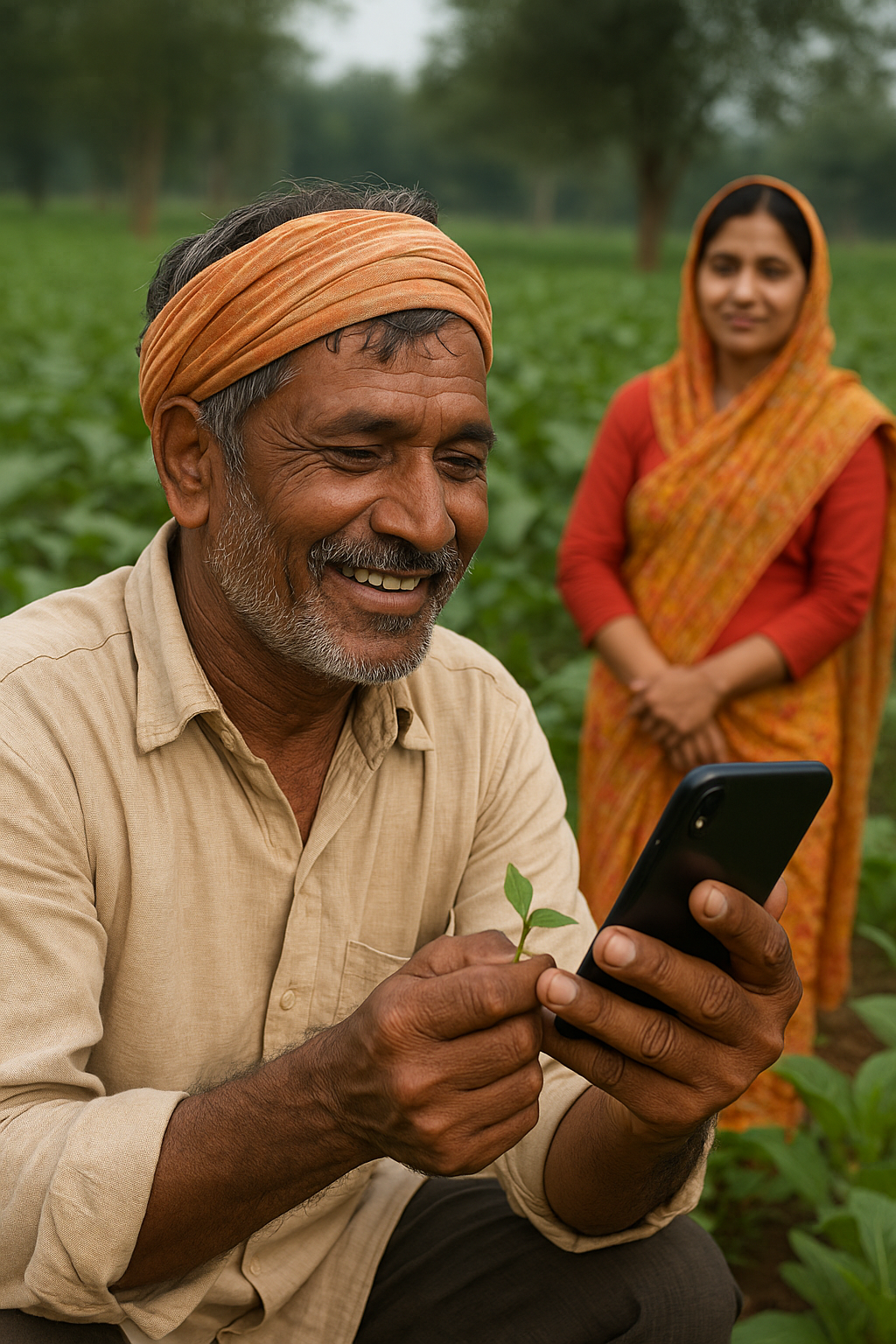AI in agriculture: Can digital tools support learning, not just yield?
AI technologies offer scalable, real-time support, yet most existing applications reinforce hierarchical, knowledge-first paradigms. Farmer.Chat attempts to buck this trend. Deployed in India, Kenya, Nigeria, and Ethiopia, the tool leverages large language models and retrieval-augmented generation (RAG) to deliver multilingual, multimodal, and personalized advisory services. Users can interact via voice, text, and image inputs in local languages, a significant leap over static mobile helplines or generic SMS broadcasts.

A new study published in the Journal of Development Policy and Practice explores the complex interplay between artificial intelligence and agricultural extension for smallholder farmers. Titled “Artificial Intelligence for Agricultural Extension: Supporting Transformative Learning Among Smallholder Farmers”, the study provides a detailed assessment of a generative AI tool called Farmer.Chat, developed by Digital Green in collaboration with Microsoft Research.
Amid mounting climate pressures and systemic disadvantages in the Global South, smallholder farmers urgently require personalized, adaptive, and participatory support systems. This research investigates whether and how AI can bridge the gap between conventional extension practices and the transformative learning smallholders need to thrive in dynamic agroecological environments.
Can AI move beyond top-down advice in agricultural extension?
AI technologies offer scalable, real-time support, yet most existing applications reinforce hierarchical, knowledge-first paradigms. Farmer.Chat attempts to buck this trend. Deployed in India, Kenya, Nigeria, and Ethiopia, the tool leverages large language models and retrieval-augmented generation (RAG) to deliver multilingual, multimodal, and personalized advisory services. Users can interact via voice, text, and image inputs in local languages, a significant leap over static mobile helplines or generic SMS broadcasts.
But despite its inclusivity and accessibility, Farmer.Chat is not immune to pitfalls. The tool’s current configuration remains largely one-directional - farmers ask, AI answers - with minimal integration of feedback or user-generated content. The research critiques this orientation, noting that while technical personalization is achieved, social learning and community-based knowledge sharing are still underdeveloped.
Through a typology grounded in Agricultural Knowledge and Innovation Systems (AKIS), the study classifies Farmer.Chat’s learning model as heavily skewed toward individual knowledge acquisition, rather than relational or social learning. While personalization improves access, it potentially undermines group learning dynamics crucial for building trust, resilience, and co-innovation in smallholder communities.
How is Farmer.Chat embedded within existing trust systems?
The study highlights the importance of Farmer.Chat’s deployment strategy, which capitalizes on Digital Green’s decade-long legacy of participatory extension via community video. This institutional and social infrastructure - local self-help groups, trusted extension agents, and lead farmers - has proven instrumental in driving adoption and usability.
In Kenya, the platform supported over 15,000 users and processed more than 300,000 queries during its first year. Extensive user testing and focus groups revealed a high degree of satisfaction among farmers, particularly for the tool’s ability to provide timely, context-specific advice in native languages. Women farmers, often excluded from traditional extension activities due to mobility constraints or gender norms, found the private, on-demand model more accessible.
However, uptake was significantly mediated by human intermediaries. Farmers were more likely to trust and use Farmer.Chat when introduced by familiar extension officers or peer leaders. The study reveals that while AI may simulate responsiveness, actual trust hinges on pre-existing social networks. In this sense, Farmer.Chat’s success is less a triumph of technology than of institutional trust-building.
To counterbalance the loss of communal learning from the earlier participatory video model, Digital Green is experimenting with integrated community features. These include embedding community videos into the chatbot interface, launching village-based Communities of Practice, and developing group discussion features to foster collective reflection. These enhancements aim to recapture the peer-to-peer learning ethos critical for participatory extension.
What are the ethical and structural implications of AI-driven extension?
Farmer.Chat’s rollout presents a dual-edged sword for agricultural extension. On one hand, it addresses major systemic constraints—particularly the shortage of extension agents, who in many low-income countries serve up to 1,000 farmers each. On the other, it risks entrenching a technocratic model that sidelines farmer agency and co-creation.
The study finds that while Farmer.Chat enables highly specific, real-time interaction, it struggles to foster the dialogic learning processes essential to long-term transformation. For instance, the feedback feature remains underutilized, and even when available, farmers often do not respond due to digital literacy gaps or lack of confidence. Digital Green has responded by mining query logs for trends to indirectly infer user needs, a workaround that, while innovative, still sidelines direct participation.
Ethical concerns also surface. Who is accountable if AI-generated advice is faulty? What safeguards exist to ensure equitable access when digital divides persist? While the platform has taken notable steps to accommodate gender, linguistic, and literacy diversity, disparities in mobile phone access and digital training remain barriers. Moreover, the centralization of the knowledge base, drawing from vetted, often governmental sources, may exclude local or indigenous agricultural knowledge.
The authors argue that for AI to truly enable transformative, “double-loop” learning - where assumptions and systems are questioned - it must be integrated into participatory, adaptive, and socially anchored extension frameworks. This requires not only technical refinement but also governance innovation. Extension systems must evolve from knowledge dissemination nodes to platforms for mutual learning and grassroots innovation.
The road ahead: A call for inclusive AI in agriculture
The study calls for rethinking the design and governance of AI systems in smallholder contexts. Among the critical questions it proposes:
- How can farmer feedback be systematically embedded and used in AI platforms?
- What governance models enable the incorporation of farmer-generated knowledge into AI systems?
- Can AI systems foster collective reflection and peer-to-peer learning, not just individual transactions?
- How can these participatory models scale across geographies with varied digital and institutional capacities?
Despite its limitations, Farmer.Chat is a powerful example showcasing what is possible when AI is developed not just for, but with, farmers.
- FIRST PUBLISHED IN:
- Devdiscourse










